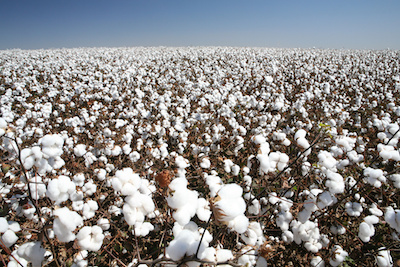
In preparing my OLLI talk on free trade that I discussed yesterday, I read large parts of The Travels of a T-Shirt in the Global Economy by Pietra Rivoli. It’s very good. Rivoli, a professor at Georgetown University, does what the title implies: traces all of the steps in the production process that lead to a delivered T-shirt at a low price. She goes around the world to see the various production processes.
One passage in particular caught my eye and I read it to the audience. She tells of meeting Patrick Xu from Shanghai, who comes to the United States a few times a year. She writes:
“Come to China,” Patrick said. “I’ll show you everything.”
I wanted the whole story, I explained. Could he show me where the shirts were sewn? No problem. What about where the fabric is knit? Yes, of course. I pushed my luck: What about the yarn the fabric is made of? The spinning factory? Yes, he could arrange it. But this wasn’t quite the beginning. What about the cotton? To tell the life story of my shirt, I had to start at its birthplace. I knew that China was one of the world’s largest cotton producers. Could I go to the farm and see how the cotton is produced?
Patrick looked at the T-shirt. “Well, that might be difficult. I think the cotton is grown very far from Shanghai. Probably in Teksa.”
“Teksa? Where is Teksa? How far away?” I asked. There was a globe on my desk and I spun it around to China. Could he show me Teksa on the globe?
Patrick laughed. He took the globe and spun it back around the other way. “Here, I think it is grown here.” I followed his finger.
Patrick was pointing at Texas.

READER COMMENTS
Andrew_FL
Feb 2 2017 at 4:57pm
It’s not just manufacturing where we produce more than ever with less labor input. Agriculture is that way too, and has been for even longer.
Of course, the imported t-shirts once in the United States have to be warehoused, distributed, wholesaled, and retailed by Americans who are employed in those industries. And employment in those industries has remained a steady percentage of overall employment since the seventies, whereas manufacturing has seen a decline in its share of overall employment.
AlanG
Feb 2 2017 at 5:19pm
The Planet Money radio show team did a multi-part show a couple of years ago on what it would take to manufacture a tee shirt. Listeners were able to sponsor the project by purchasing a specially designed Planet Money Tee Shirt (I regularly wear mine). The whole series is archived HERE.
Mark Bahner
Feb 2 2017 at 6:14pm
In the next 2-3 decades, employment in retail sales will collapse to a small fraction of its current amount…probably less 50 percent. That will happen because:
1) Computer-driven vehicles will delivery goods to houses, rather than people driving to brick-and-mortar stores.
2) The warehouses will need far few employees than the brick-and-mortar stores. No cashiers needed for checkout. No people needed to keep the stores clean and the merchandise appealing to the eye. No people needed to bring carts in from the parking lots (because there will be no parking lots). In fact, the warehouses will likely have most work done by robots moving down very narrow and dimly lit aisles, with merchandise stacked to the ceiling.
3) Fewer warehouses will be needed than stores, because stores need to be conveniently located, and stock items such as pants of a variety of sizes (even if no one needing that particular size comes in very often).
A glimpse into this future can be seen by comparing the sales per employee for Amazon versus Walmart. Amazon’s sales per employee are much higher.
Andrew_FL
Feb 2 2017 at 6:49pm
That’s an interesting prediction Mark, and I expect at that point employment would shift to different sectors if that does indeed happen.
MikeP
Feb 2 2017 at 10:09pm
*cough* cotton subsidies *cough*
Adam
Feb 3 2017 at 7:12am
Impacts of US cotton subsidies? Huge. David Sumner analyzed the impacts using an econometric model and found that “removal of the upland cotton subsidies would on average reduce U.S. exports by 44 percent, and increase world prices by 10.8 percent or $0.059 per pound compared to baseline projections of export quantities and world prices.
Capt. J Parker
Feb 3 2017 at 10:33am
This really shouldn’t surprise anyone. Labor costs are high in the US relative to much of the rest of the world. So, naturally our exports are things with low labor content and US agriculture has wrung out enormous amounts of labor from many agricultural products. The trend for the US to export low labor content raw and semi-raw materials and import manufactured goods has been going on since at least the 80’s when Lester Thurow was explaining how the Japanese were eating America’s manufacturing lunch.
The low cost and exportability of American agricultural products is disadvantaged in many trade deals that allow countries to maintain agricultural import restrictions under the theory that government’s should be allowed to ensure such things such as “food security” and “culturally important” agriculture. So, Trump does have a point when he says many trade deals have disadvantaged the US. He’d have an even stronger point if the US did the economically correct thing and eliminated its own agricultural subsidies.
Dave Smith
Feb 3 2017 at 12:57pm
Everyone should read the book.
Bill Harshaw
Feb 3 2017 at 6:35pm
These days the Texas cotton may well have been exported to Vietnam to be spun, with a further export from Vietnam to China for the weaving, etc.
http://facelessbureaucrat.blogspot.com/2017/02/trade-is-not-simple-vietnam-spinning.html
Comments are closed.